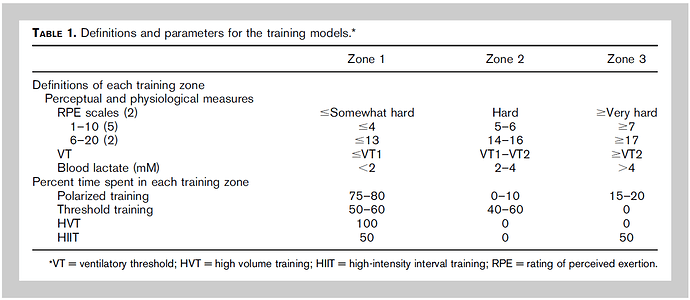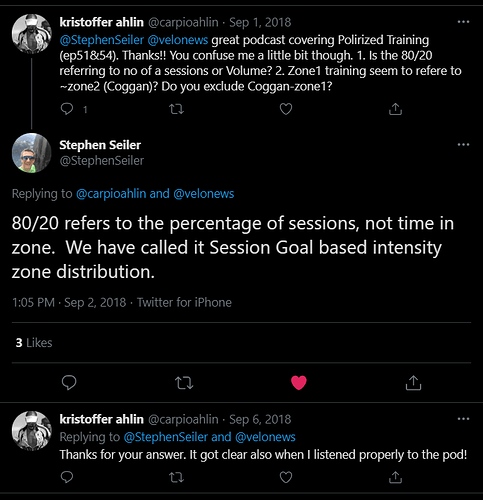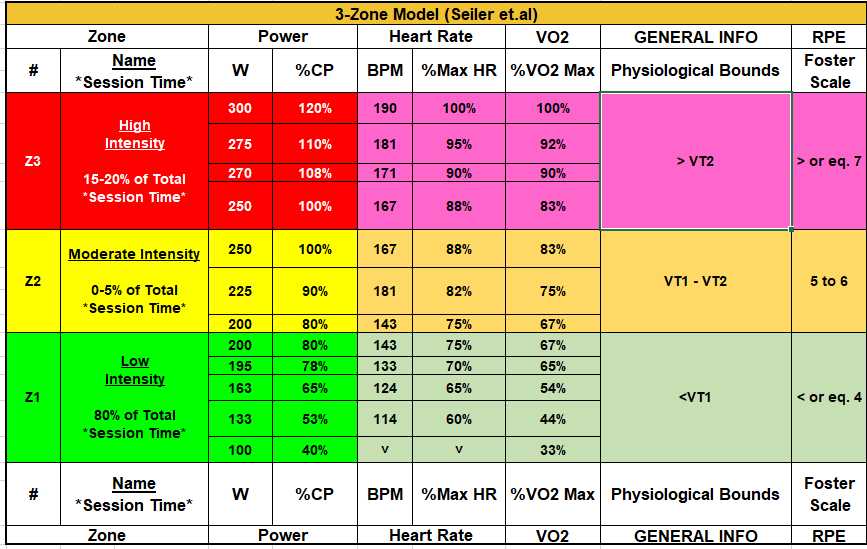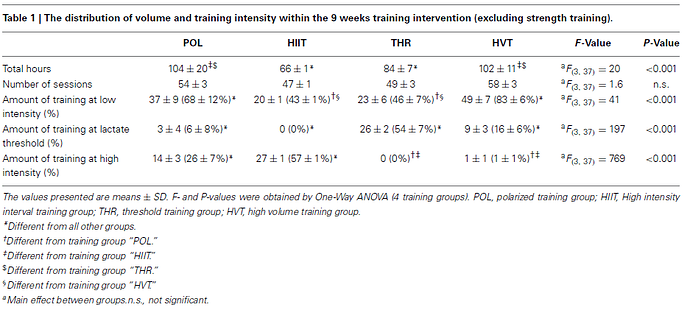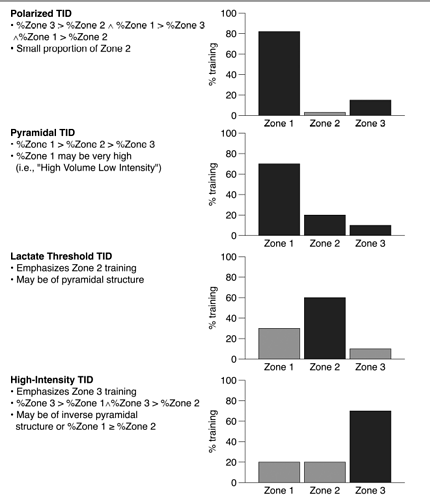Hello,
Just trying to get my head around Intervals.ICU classifications of training intensity distributions in the 7 zones (such as for Polarized or Pyramidal training) and how it compares with the classic 3-zone session duration used in most literature that describe such training schemes.
I’ve seen there’s a link to an FFT Youtube video but I’m curious if there’s a better reference to see how the mapping is done from a 7-zone model to a reference 3-zone mode (outside of general shapes of bar distributions). Maybe a spreadsheet of some sort to verify/cross-check what’s going on?
Just as a refresher, below table is how Polarized training is classically described. Here, the % time is the % of total session time spent in each of the zones. Going by this :
- 75-80% session time is suggested in Z1 in a 3-zone “low intensity” area. It appears this would map to Z1, Z2 and a tad bit of the lower end of Z3 in a 7-zone model.
- 15-20% session time is suggested in Z3 in a 3-zone “high intensity” area. It appears this would map to an area top end of Z4 and beyond in a 7 zone model.
- 0-10% session time is suggested in Z2 in a 3-zone “moderate intensity” area. This would map to a small area between top end of Z3 to lower end of Z4 in a 7 zone model.
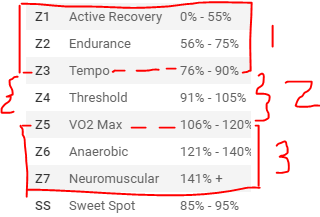
Appreciate it if someone can confirm this is how Intervals.ICU interprets the intensity distributions?
